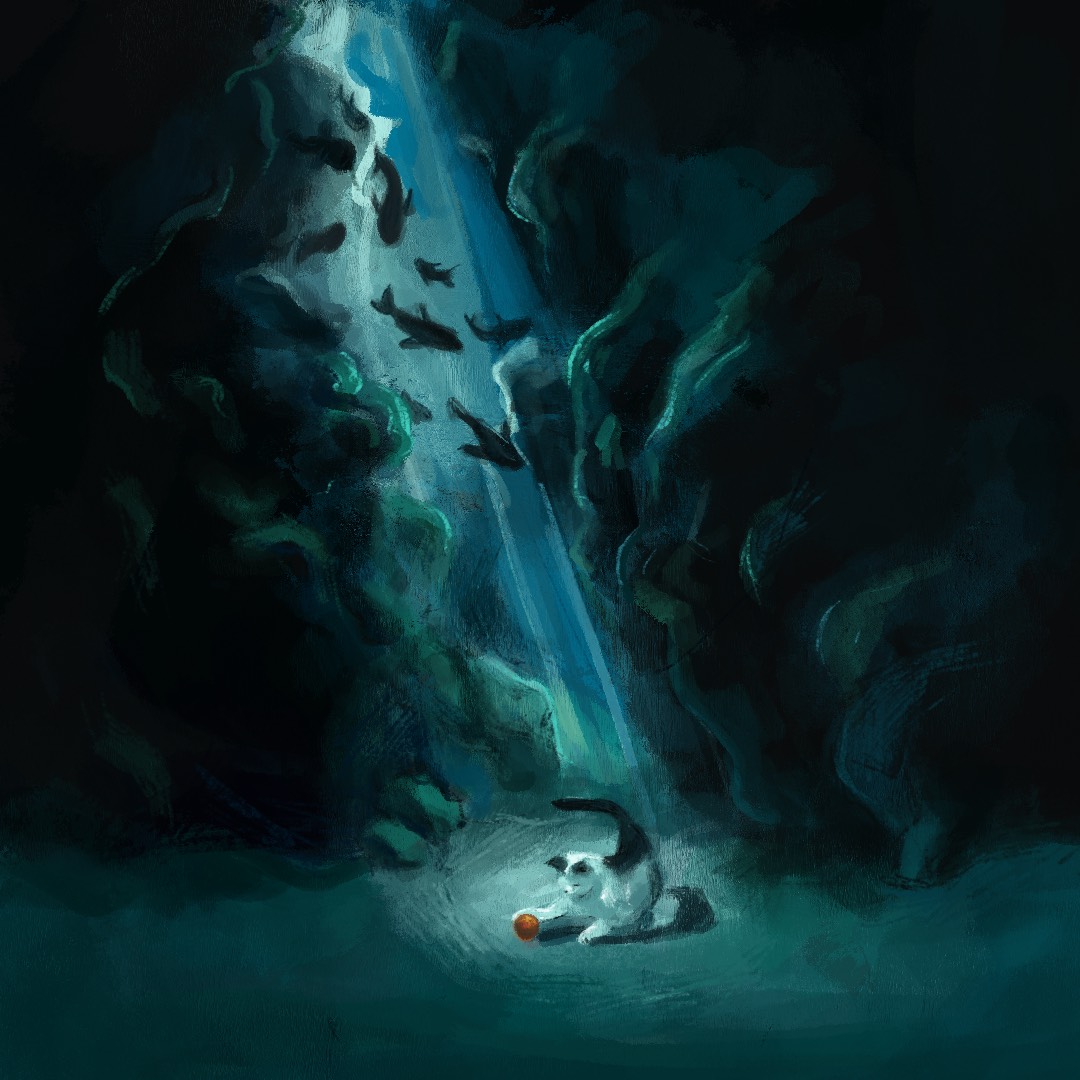Motivation
I adamantly believe that while ultimately feelings are how we make sense of the world (i.e. underneath the hood, thoughts are “understood” through changes in emotional states), we humans are terrible at preserving feelings and emotions. We feel so much so often and yet do so little to remember how something made us feel at a certain point in time. Sure, at times, we may write down thoughts about our feelings, but the way in which we interpret and understand language changes with time, which makes this a futile vehicle for reminding our future selves of our current emotional state.
However, the year 2020 had such a deep impact on my personality and psyche that I wanted to do my best to try to preserve as much of the emotions I experienced as I could. So I turned to the medium closest to my feelings and put together numerous pieces of music I’d written [mostly] during this period into a coherent album that tells my story of the past year. It’s 20 minutes and 20 seconds of dark piano instrumentals, split over 9 tracks, but ultimately a single continuous story.
The overall album structure
20:20 is a story of a young man’s growing comfort with discomfort. It takes the listener from an anxiety inducing intro (“Intro” and “Sacrifice”), to a peaceful climax (“Under Water”), all the way to an ending (“December 36”) that is just as dark as the intro, but with a bit more subtlety. By “more subtlety,” I mean that for example, similar to the darkness of the Bmb5 of Intro, December 36 has a Gdim equally as dissonant and unstable, but it’s used as a passing chord between two inverted I chords, rather than being one of the two main chords of the progression around which the whole piece is centered.
While each piece has its own story, the album as a whole can be thought of as a long, seemingly never-ending piece, split into 2 parts (before and after “Under Water” the climax of the Album).
Most of the songs were originally written as improvisations and didn’t have a ton of technical intentionality, but as I’ve recently looked at the pieces from a more technical and analytical perspective, I’ve noticed some interesting qualities of some of the pieces, which I’ve tried to capture here.
A dearth of resolution
Those with some music theory background may notice that all songs but the last of the album (“December 36”) fail to arrive at home (end in the unaltered tonic/I chord of the piece’s respective key). Specifically, these are the last chords of each of the songs in the album:
- Intro: II altered (Bmb5 in A Minor)
- Sacrifice: IV altered (Emb5 in A Minor)
- La Vie en Rose: V altered (B7 Dominant in E Minor)
- La Piece Manquante: V (B in E Minor)
- Prelude to June: IV altered (Adim in E Minor)
- Under Water: I altered (FM9 in F Major)
- Elysium: V (C#M in F# Harmonic Minor)
- Patience & Passion: I altered (Dm9 in D Minor)
- December 36: I (Fm in F Minor)
This is most obvious in the ending of the penultimate track “Patience & Passion” where in addition to the 19 minutes the listener has waited for a resolution, there is a very slow outro that any reasonable ear would expect to comfortably resolve. In the end of this track, the same exact cadence as the one ending “December 36” is used (10 -> 9 -> 1, with the I chord landing on 9) but the trailing 1 in the lead voice is never played, leaving the listener waiting for the resolution one last time, and instead we go back to the 10, which is used as the key center in “December 36.”
The usage of resolution to the I chord to signal the end of a journey is far from a novelty, but I really like the unsettling feeling that one may get from listening to a single piece by itself (which the old man in me shakes his head at “back in my day.. people listened to albums front to back as the artist had intended, and “shuffle” was called the “devil’s feature”). For example, the start of Sacrifice resolves the extremely violent Bmb5 ending run of Intro and on the tail end, sets up for the modal interchange happening in the beginning of La Vie en Rose - listening to it by itself may not be a complete waste of time, but the listener is greatly rewarded for listening to the track in context.
A deeper look at “Passion & Patience”
There’s also a lot of technical nuance that went into the internals of some tracks. For example, one of my favorites, “Passion & Patience” is a conversation between Patience (A) and Passion (B) with the song structure A1, B1, B2, A2. The story is about each trying to teach the other about their way of existence.
In the first passage from Patience (A1), we hear a lot of open chords (the opening chord is quite possibly the brightest, most open chord I’ve written) with lots of bright, optimistic and calm feeling (lots of open 6th chords). We move on to the first passage narrated by Passion (B1), which counters the melody of A1, but instead of being over a left hand in F major, it’s over a left hand in the relative harmonic minor (A harmonic minor) which aims to depict the fact that Passion sees the same storyline in a much darker way. In B2, we hear the same melody and bassline but a bit less anxious and restless. This is accomplished by removing the accompanying minor 6th voicing from the main melody line. Finally, in A2, we hear a reharmonization of A1, where instead of a bright, open voicing Dm7, we opt for a more clustered Dmadd9 signifying that while Passion has learned to partially manage her anxiety, it’s come at the cost of “tainting” the purity and brightness of Patience.
“I’d like to thank the academy”
I can’t talk about this album without acknowledging my girlfriend who not only gave me the space, time and inspiration to write the album, but also perfectly captured and drew a visual representation of concept of the album.

The album artwork depicts our cat, Bug, playing mindlessly with his toy, seemingly unaware that he’s alone on the floor of an ocean, with all sorts of dangerous creatures circling right above his head. This, in essence, is the theme of the album: learning to be comfortable and happy despite being miles below the surface of the water.
Also while my good friend Steven is officially credited only on one of the songs (“Under Water”), he helped with the sound design and engineering of the entire album so I definitely could not have done this without him. He’s a fantastic musician with a ton of cool music out that you should check out.
As weird of a year 2020 was, I certainly hope you too found something in it worth cherishing.


